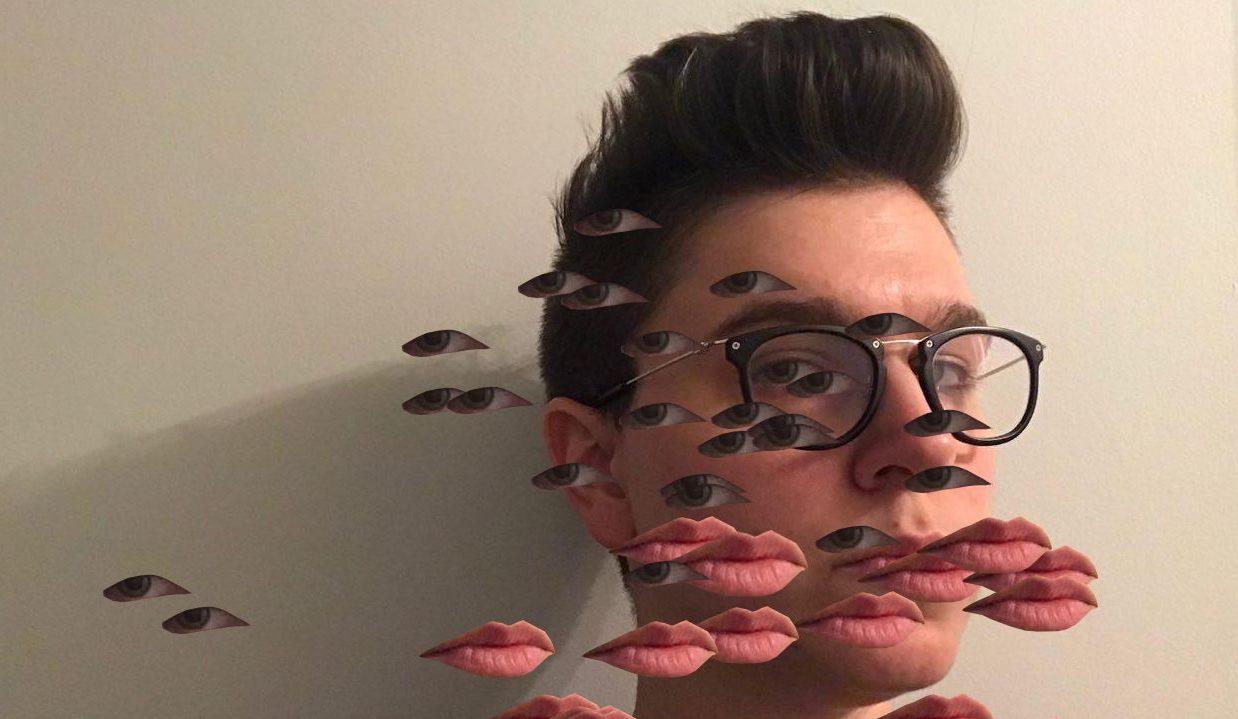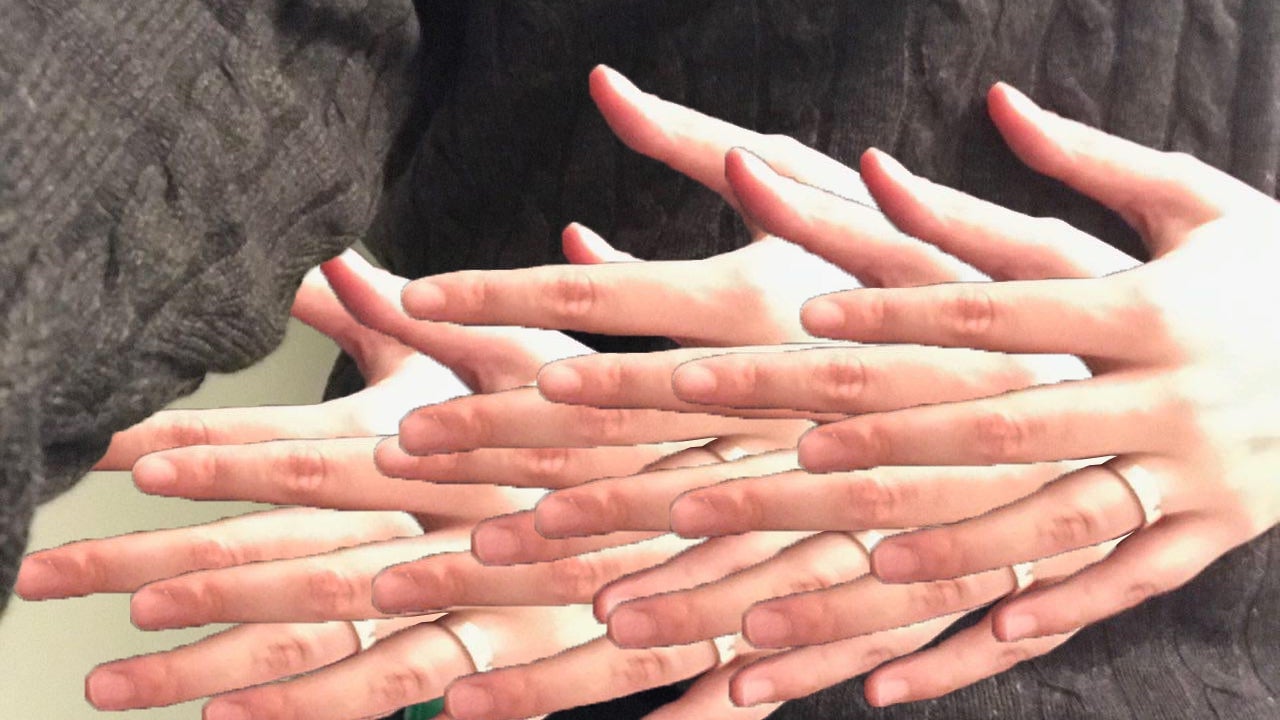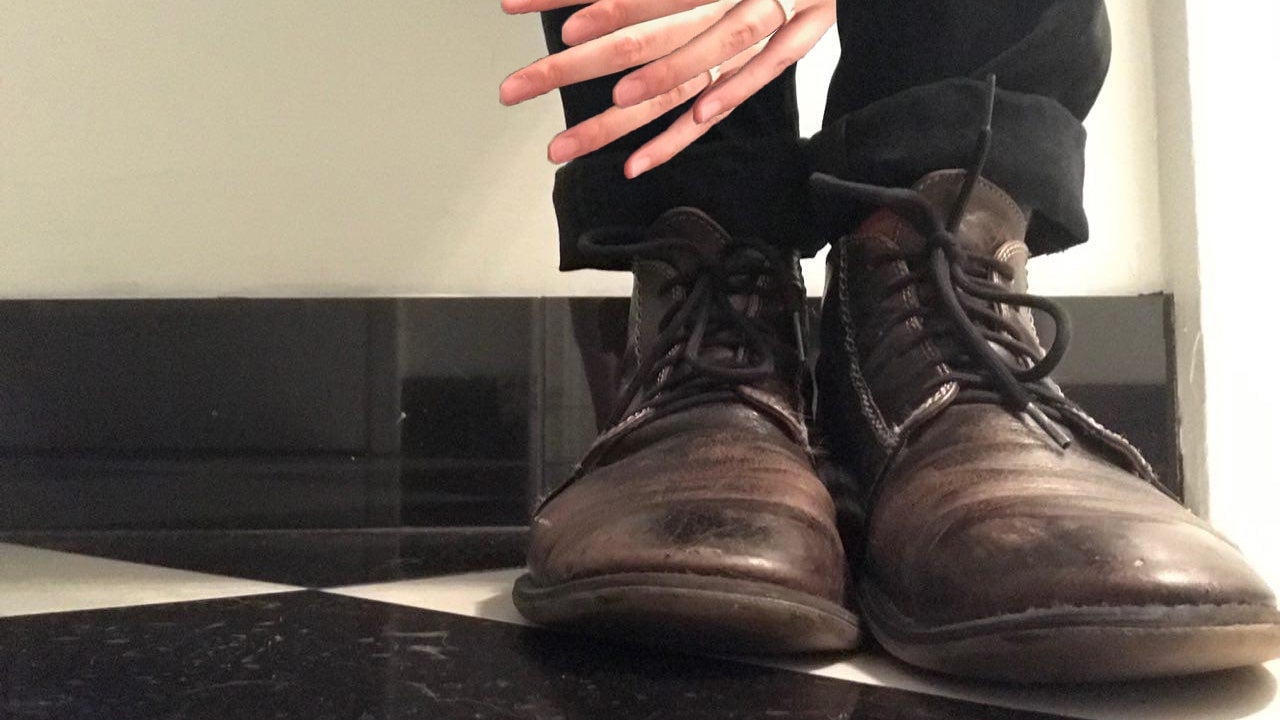I thought I understood my trans body—then I tried VR
Bodies arrive differently in every virtual reality experience. Sometimes the player is a pair of floating hands holding a palette and a brush. Other times, a player drops into an entirely new body, one they might never have chosen for themselves. And sometimes a player floats through space without a body at all, existing in a disembodied first-person state, simply there to experience, not interact.


Bodies arrive differently in every virtual reality experience. Sometimes the player is a pair of floating hands holding a palette and a brush. Other times, a player drops into an entirely new body, one they might never have chosen for themselves. And sometimes a player floats through space without a body at all, existing in a disembodied first-person state, simply there to experience, not interact.
I empathize with this experience. I do not like to admit I have a body. In fact, I have spent most of my life unable to remain in it.
Last year, I came out as trans. I identify as non-binary. I wear a hat that says “Gender is a Galaxy,” and plot my own existence somewhere outside male or female, somewhere else altogether. Sometimes I experience dysphoria, which is the profound discomfort and occasional dissociation from seeing your own body move through the world and not being able to claim it as your own. In these moments, reality doesn’t feel entirely real. There is a sort of distance, a disconnect.
The first time I tried virtual reality, I still thought I was cisgender. I didn’t know the feelings I walked around with were dysphoria. I thought that’s what it was like to be in a body. I thought everyone didn’t quite know where their arms were, that everyone’s face was slightly numb all the time, that no one in this world looked at their body in the mirror without getting just a little bit nauseous.
Back then, I didn’t pay attention to my internal experience of having a virtual body. After all, my body felt virtual all the time. But now? Now it doesn’t. Equipped with a keener understanding of my place in space, in that great big gender galaxy, I wanted to explore what my trans experience would be like in VR.
I recently spent an afternoon at VR World, which is a buffet of VR experiences housed in midtown Manhattan. You pay for a couple of hours or a day pass and then try dozens of games, everything from meditative art experience of Tilt Brush to ultra-active heist of Superhot.
I went in with a mission. I asked for games where I played in a body that was not my own. From what I hoped was a place of strength, I wanted to provoke dysphoria. It felt like wiggling a loose tooth.
I was first directed to Space Channel 5, a dance-battle game that features a cartoonish, scantily clad lady-bod that moves as you do. I was the only one who wanted to play this game, and I quickly realized why. After I put the headset on, I looked down, and it was like gazing at a Barbie doll. A distinct shape, exaggerated and unrealistic. It was unapologetically feminine, a celebration of go-go boots and hip-pops. There was a familiar joy about it, a play-pretend permission that anyone who has ever immersed themselves in make-believe with dolls has felt right down to their cells.
I expected to feel that strange feeling in my mouth, or the rubberizing of my face. But I felt nothing. Nothing but the distant ghost of it, an expectation and nothing more.
I looked in the mirror and moved my body. Only the hands and head turned, like some sort of undead mannequin; the rest was plastic. I laughed at my purple pigtails and my skirt. It felt like role play, which is how I wish gender felt, how I think it should feel. I felt able to try this on like a costume. It felt both close—wearable, relatable—and far away.
So why weren’t people lining up to play as a girl? I’d guess that people didn’t want to play this game because we are conditioned to see a masculine body as default. Most video games I played growing up featured male protagonists, and we’re trained to think that stories featuring women are only for that gender. J.K. Rowling used initials instead of her first name because her publishers thought boys might not want to read a book by a woman; when upmarket literary fiction features a female protagonist, it is frequently labeled “women’s fiction.”
Historically, members of a dominant group have rarely been asked to empathize deeply with a member of a marginalized group. Readers of all genders are asked to step into the narrative shoes of men all the time—men, on the other foot, rarely choose to try on a pair of fictional heels.
But in virtual reality, sometimes you can’t see your feet at all.

Video games almost universally (and necessarily) take place in the second person. They transport a player into a game, turning a consumer into a participant. The player inhabits a body that isn’t theirs, controlling it with a joystick and making decisions that determine plot lines. It’s almost a possession, with the player as the restless spirit.
In virtual reality, the distance between the player and protagonist is ever-closing. Your meatspace heart races and your meatspace mouth runs dry when the environment feels threatening, the second person feeling closer to first. The space is getting narrower and narrower until the player’s body will one day be indistinguishable from the protagonist’s body. In some ways, it’s already happening—for instance, your body can be fooled into thinking it’s standing on the edge of a skyscraper, when you’re actually firmly planted on a stationary wooden beam set neatly on the pristine white floor of VR World.
That’s how I felt when I chose Richie’s Plank Experience next. As I watched a child do it, I thought that surely it couldn’t possibly be that disturbing. I began in an elevator, staring at the buttons and was instructed to push the one that says “plank” on it. I peeked through a crack in the elevator doors as it ascended, trying to prepare as much as possible. When I saw the blue of the sky, I held my breath as the doors opened. I was at the very top of a skyscraper. A wood plank extended out into the air and I could see the city street below me.
“I underestimated how terrifying this would be,” I said to the air around me as I stepped my feet onto the plank. I felt the edges of it, but my normal peripheral vision—the usual response of being able to see my feet below me—didn’t exist.
“Everyone does,” said the disembodied voice, a VR World employee whose job it was to shepherd us idiots through jumping off a building. “Walk out.”
“I know when I get to the end, I’m not going to want to jump.”
“You have to,” they said.“It’s not real. It’s okay, you’re on the ground.”
I edged my way out onto the wood. I promised myself I would take it all in—the bird flying in the distance, the mountain, the billboard that read “Richie’s Plank Experience.” But all I felt was bodily terror; I have never loved heights. I clung to the poor employee’s forearms.
“It wouldn’t be nearly so bad if I could see my feet,” I said, and I laughed to release the tension building in my footless, invisible body.
That’s just how it is, I thought. Walking through the world with dysphoria is the strange and terrifying experience of having a dual body, one that suffers through huge waves of feelings yet is still, somehow, completely unplugged. What must it be like to be a person who can figuratively “see their feet” all the time?
When I got to the end, I did what I was supposed to do. I jumped.

VR is currently still in the uncanny valley, which is the term for the feelings we have when we look at (and play as) close-but-not-quite human bodies. It’s a mixture of strange attraction and revulsion.
We are fairly early in the presumably long arc of these technologies, so we haven’t yet figured out a satisfying way to move around. To solve for this problem (as well as engineering ones), most VR experiences feature an invisible body only represented by limbs, such as the armless hands shooting a bow and arrow in Elven Archer or the levitating swords with no body attached at all in Fruit Ninja.
Nothing moves exactly the way you think it should in VR. Sometimes your hands are backwards while you’re trying to shoot an arrow, sometimes your swords shake, or your arms move like liquid, or you have to punch something twice to shatter it even though you know you nailed it the first time.
Being in a body that doesn’t feel like your own is difficult. I am an expert at this battle. I am used to wishing my body were invisible and feel most comfortable as a pair of floating fists.
I wish I could give you some sort of illustrative story about this feeling, some lightning-bolt moment where it was clear what was happening, and that I knew I was trans. But like a fish doesn’t notice it’s surrounded by water, the explicable moments were diluted by dysphoria’s pervasiveness.
Instead, it’s been a collection of bumps in my experiential fabric that I thought were entirely normal. I have trouble leaving the house without binding my chest flat, for instance, and when I do, I’m inexplicably angry or feel like something terrible is about to happen. I cried in the gym once because there were too many mirrors in it, and I couldn’t make my body deadlift a barbell in the face of a repeating reflection that didn’t make any sense. Sometimes when people make a big deal out of my body or my gender, my skin feels like the skin on top of a homemade mousse. I didn’t know my body was in pain due to an autoimmune disorder because I was always floating next to it, controlling it like an avatar in a video game. Uncanny. Not quite me, not quite a person. Always and everywhere, uncomfortable.
There was another game, directly to the right of the dance battle one, and it had a very long line. It was a boxing game called Creed, where you are able to “choose” your body (all men, likely cis) as well as your opponent’s (same). At first I was surprised that the employees didn’t point this one out, even though it perfectly fitted my stated criteria. But then I remembered that the male body is often seen as a default, with everything else as something specific. The employees likely didn’t even think of this body as different or separate.
In theory, I know enough to punch a virtual man. Back in college, when I was trying to solve the problem of my discomfort by not eating and exercising for hours a day, I got certified as a kickboxing instructor. Only once did I find myself in a situation needing to punch a real one. A group of dudes had grabbed me and a friend in a Paris metro station. I wound around to punch the man in the face, but found I couldn’t make myself do it. I punched him in the shoulder instead.
But this was pixels. I felt confident.
I placed the headset on and looked down. I was muscular, covered in tattoos, and wearing long shorts that my twink-ass wouldn’t be caught dead in. But once again, even though this arm punched when I punched, it still felt far away. As far away as the employees discussing my pronouns behind me, which I faintly heard while a caricature of an Irish person, all flaming red hair and green clothing, tried to hit me in the head.
“What do you mean ‘they’?”
“Look, just don’t call them ma’am, okay?”
I tested my strongest punches: left jab, right hook, right uppercut. The last one didn’t work no matter what I tried, and the delay in perceived hits resulted in a massive wallop to my digital skull. Of course it didn’t hurt, but I was hurled backwards from my chosen body. To continue, I had to put my hands back in the gloves, re-attaching my meatspace body to my virtual one like Wendy sewing Peter Pan’s shadow back on at the foot.
In this moment, I realized something: In virtual space, everyone thinks about how to stay in their body. How do cisgender people feel in their virtual bodies? Do they feel like I do in my physical one?
I cannot reach a definitive conclusion—not for everyone, and certainly not for all trans people. But I can hazard a guess. As we close the gap between player and protagonist in VR, the slightest centimeter of difference, of off-ness, feels like miles. And even as I was ducking and swinging and keeping my hands up, even as I was beginning to sweat, my virtual body was a) distinctly not my own, b) moving like a cartoon character, weirdly concave with spaghetti legs, and c) restricted in space, as I couldn’t move my meatspace feet off the square mat on the physical floor, lest I accidentally punch a very solid wall.
In this specific space, players are hyper aware of what it takes to stay in a body. For those of us who move through the rest of our physical lives this way, a virtual body might feel eerily familiar.
I knocked my opponent out in record time. It flashed up in front of my eyes, in small white letters that made me feel just a little bit proud. I called the attendant over.
“How long do I have left?” I asked.
“Three minutes,” she said.
“Three minutes!” I gasped, already feeling a gym soreness in my upper back, my quads. “I can’t do this for another three minutes. Can I cede my time?”
She helped me take the headset off. My hair was sticking up and my arms were shaking. My opponent had vanished, replaced by a person in a uniform. I marveled at how in my own body I felt—tired, out of breath—after only a few minutes of punching ghosts.
I looked down at my limbs and everything moved exactly as I expected it would. I pulled my sweater over my head. I turned my hands to the ceiling and touched my own face. I checked, and I saw my own feet. I re-attached myself to my body and watched as a stranger put on a headset and began to get acquainted with their temporary one, grabbing hold of it with both hands.
When my face hit the sharp winter air, only then did I conclusively know that I was not in virtual reality anymore.